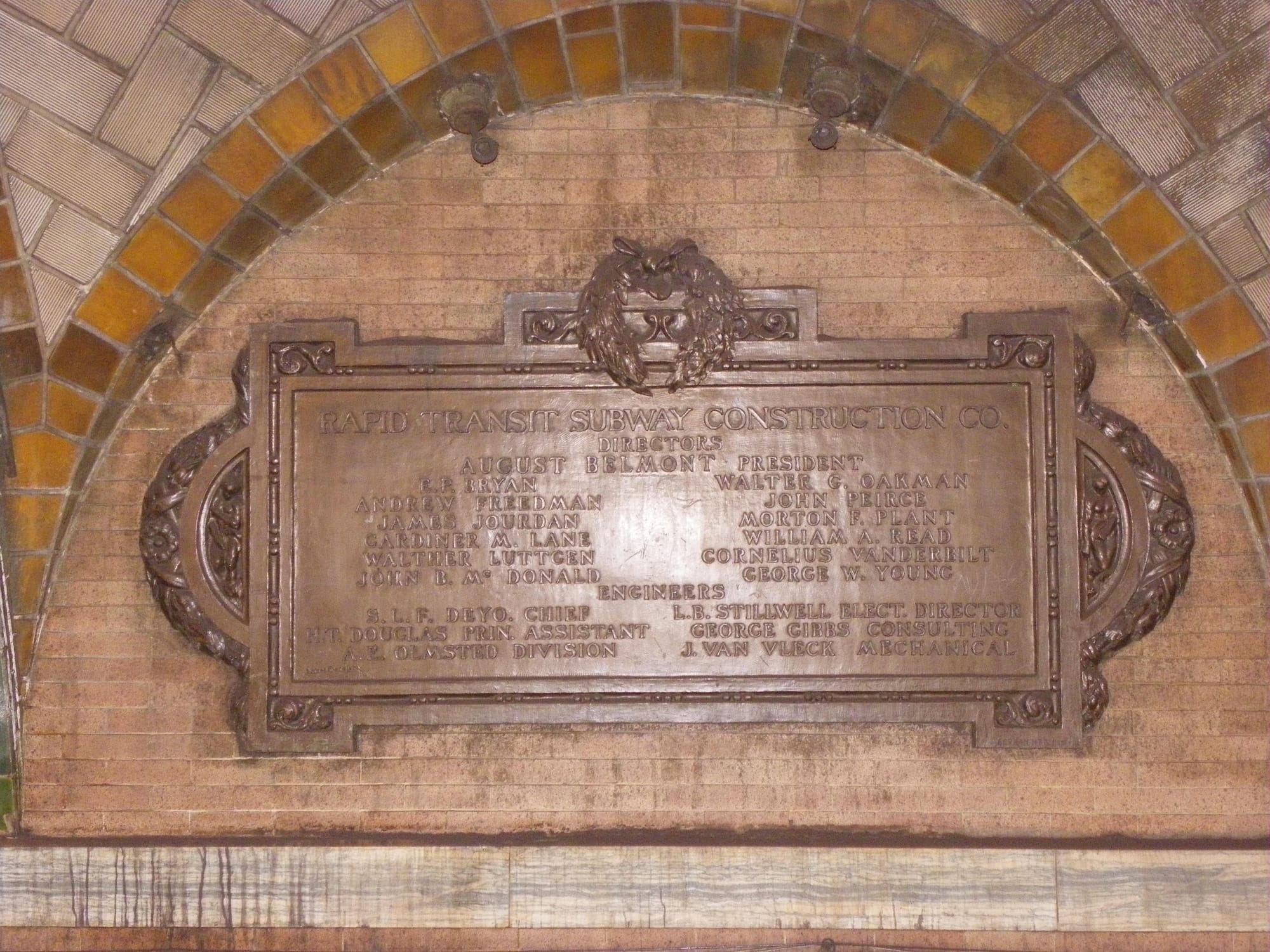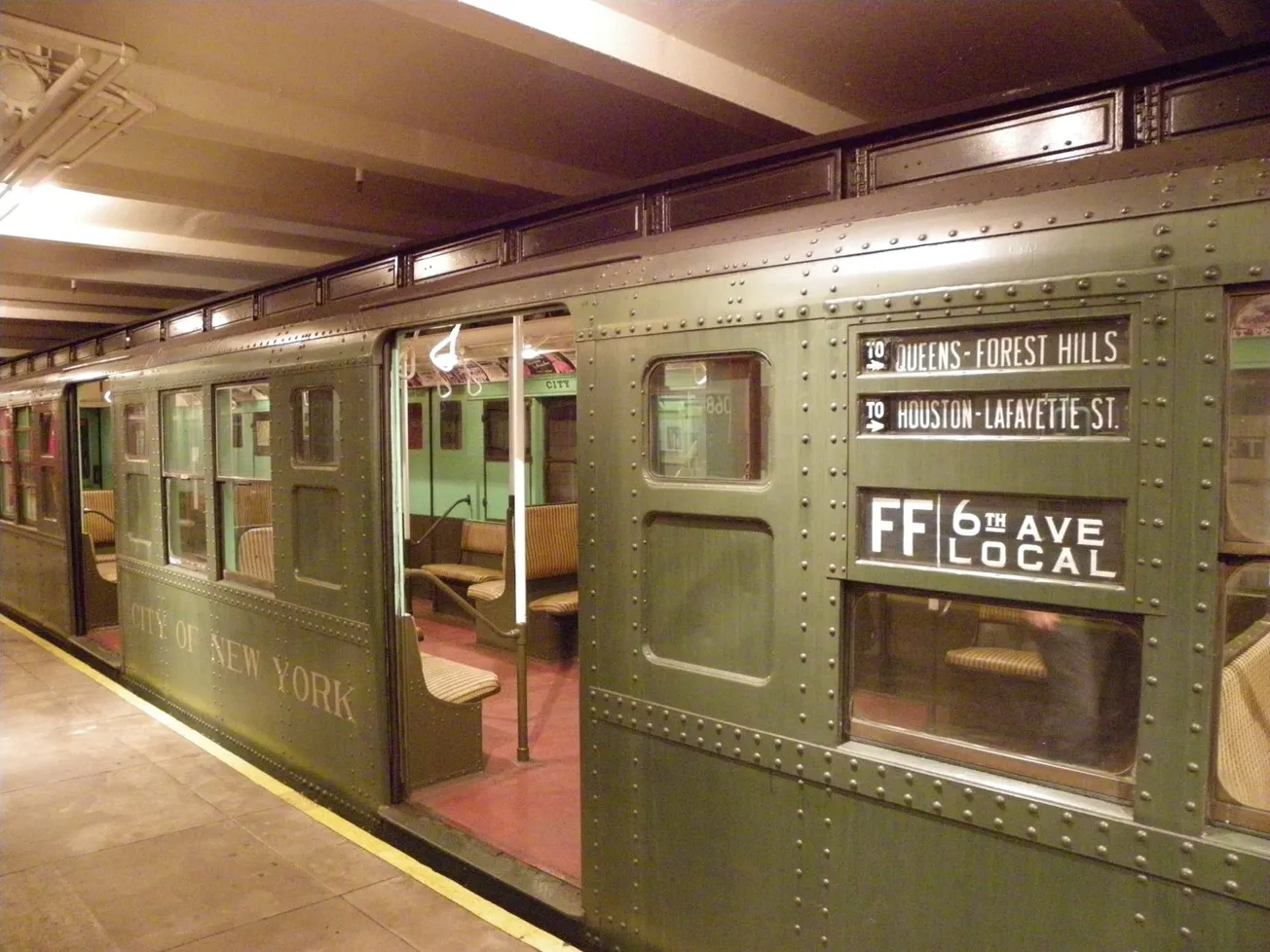// How the Subway Transformed New York City (and the World)
My whirlwind trip to New York City last month, in the company of my wife and sons, took us to some of my favorite transit landmarks: Grand Central Terminal (with a pitstop for a "pan-roast," or oyster stew, at the Grand Central Oyster Bar), the kiosk at Astor Place, the old City Hall station, and of course various uptown and downtown locals and expresses. This week's post is a plunge into the early history of the New York subway which, one hundred and twenty years after it first started running, is still one of the world's great urban transit systems. All aboard!
Every city has its phantom tollbooths, spots on the map where the space-time continuum does not seem to apply. In New York, there is a certain subway train that, after the last passenger has gotten off, makes a brief stop at a ghost station: a spectacular, century-old chapel of rapid transit that has been sealed like King Tut’s tomb since the end of the Second World War.

This is the old City Hall station, a legend among transit historians. In order to visit it, I had to promise a spokesman for New York City Transit that I would not reveal the number—or letter—of the train that stops there. James Anyansi met me at the end of a damp subway platform in Lower Manhattan, and, after showing his ID to the operator of a train emptied of its passengers, we took a short, wheel-shrieking ride around a sharp bend in the track.
The doors opened, and we emerged into a time capsule: a station of the Interborough Rapid Transit Company (the IRT), looking much as it did when it first opened to the public on October 27th, 1904.

It took a few seconds for my eyes to adjust to the diffuse light cast by the frosted globes of multi-armed chandeliers. We were standing on a sweep of platform curved like a sultan’s scimitar. Unlike the simple, post-and-lintel construction of most subway stations, there is not a straight line to be seen in the old City Hall station: a succession of arches curved out of sight, as in the crypt of a Romanesque church. Between the semi-circular ribs, a herringbone pattern of glossy cream and emerald tiles bordered skylights of leaded glass; incandescent bulbs illuminated the station’s gloomier corners. As the train pulled away, leaving us alone in the station, it revealed an elaborate bronze plaque on the other side of the tracks. Between seated damsels bearing the dates 1900 and 1904, it paid homage to, “This first municipal rapid transit railroad…Authorized by the state / Constructed by the city,” and bore the names of Cornelius Vanderbilt and August Belmont. We walked up a broad staircase to a domed mezzanine crowned by a glass oculus, once the spot where “ticket choppers” collected fares from commuters. Anyansi directed his flashlight beam up a staircase sealed by heavy metal doors. (Had we been able to open them, we would have emerged next to the statue of Nathan Hale outside City Hall.)
When it opened, a New York World reporter called the City Hall station, “A cool little vaulted city of cream and blue earthenware like a German beer stein,” which just about gets it right. In all New York, there is only one other place remotely like it: the time-warp temple of hygienic tile that is the Grand Central Oyster Bar. Both were designed by a Spanish architect known for bringing the technique of tiled vaulted ceilings common in Catalonia to America. During the Second World War, the station’s magnificent leaded glass ceiling was blacked out in anticipation of air raids; it closed permanently in 1945, because its platform was too sharply curved to handle longer trains. Waving his flashlight at waist height, Anyansi signalled the driver of the next train to pick us up. We rounded another curve, and, in a Viewmaster’s click, were back from the rabbit hole, in the workaday, no-nonsense domain of the MTA.

New York’s early subway boasted other touches of elegance, most of them effaced during the twentieth century. Oak ticket booths, with elaborate bronze fittings, were supplanted by cages of Plexiglas and steel.






